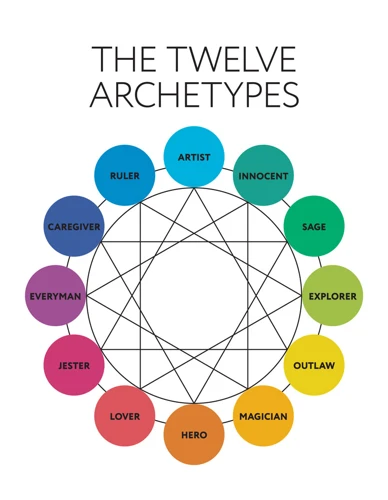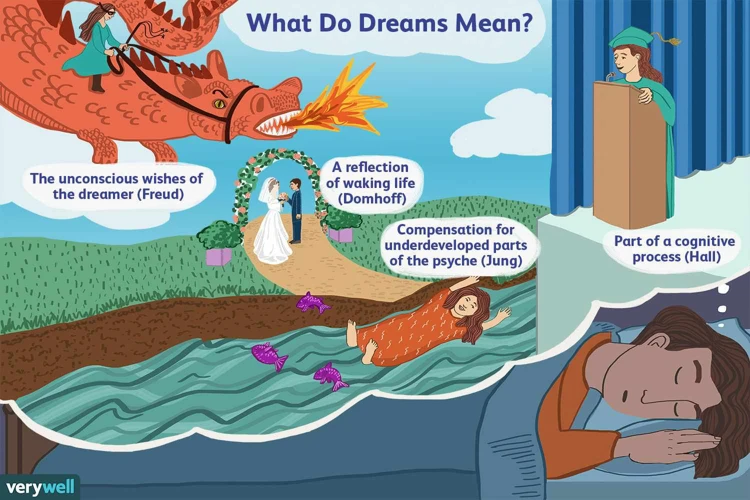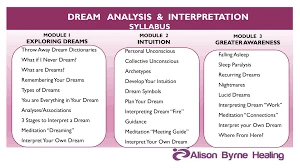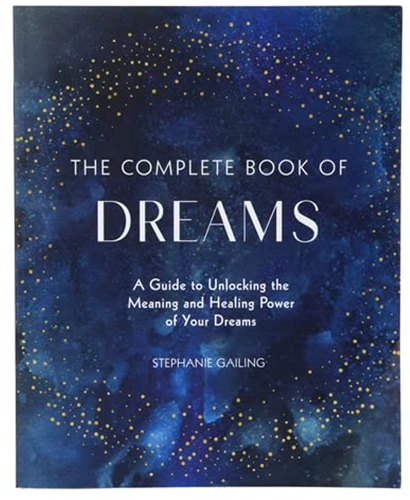Have you ever woken up from a dream feeling confused or intrigued by the symbolism present in it? Dreams have been a source of curiosity for centuries and can often leave us feeling perplexed as we try to decipher their meaning. One key to unlocking the mysteries of dreaming lies in exploring the archetypes present in dream symbolism. Archetypes are universal symbols that exist unconsciously in the human psyche and are often represented in our dreams. By understanding and interpreting these archetypes, we can gain insight into our own personal psyche and the deeper meanings behind our dreams. In this article, we will delve into the world of archetypes in dream symbolism and explore how they can be used to unlock the mysteries of our dreams.
What are Archetypes?

As we delve deeper into the world of dream symbolism, a term that frequently arises is ‘archetype.’ While the term may sound familiar, its meaning and significance in the context of dreaming often leave many with more questions than answers. In essence, archetypes are universal symbols that exist in the collective unconsciousness of humanity. They are deeply rooted in our psyche and are often seen as the building blocks of human behavior and experiences. Understanding archetypes is crucial in unlocking the mysteries of our dreams and unraveling their meaning. Let’s explore this concept more closely.
Examples of Archetypes
Archetypes are universal symbols that represent patterns of human experience and behavior. They are deeply ingrained in our psyche and can be found in art, literature, and religion all over the world. These symbols often carry a powerful emotional charge and can be used to help us better understand ourselves and the world around us. Here are some examples of archetypes:
| Archetype | Description |
|---|---|
| The Hero | The hero is the champion or protagonist of a story. They may represent courage, strength, and determination. Examples include Luke Skywalker from Star Wars and Harry Potter from the Harry Potter series. |
| The Mother/Father | The mother and father archetypes represent nurturing, protection, and guidance. These figures may be seen in religious figures such as the Virgin Mary or in popular culture, such as Atticus Finch from To Kill a Mockingbird. |
| The Trickster | The trickster is a mischievous figure who challenges the status quo and often creates chaos. Examples include Puck from A Midsummer Night’s Dream and Loki from Norse mythology. |
| The Shadow | The shadow represents the darker parts of ourselves and can be both scary and intriguing. This archetype is often portrayed as a villain or antagonist, such as Darth Vader from Star Wars or Hannibal Lecter from The Silence of the Lambs. |
| The Wise Old Man/Woman | The wise old man or woman represents experience and wisdom. They may take on the role of a mentor or guide, such as Gandalf from The Lord of the Rings or Yoda from Star Wars. |
Understanding these archetypes can help us better interpret the symbols and themes that appear in our dreams. By looking at these symbols and their meanings, we can gain insight into our own psyche and learn more about the world around us. In the next section, we’ll explore how archetypes can be applied in dream interpretation.
Understanding Dream Symbolism

Dreams have been a source of fascination and mystery for centuries. While some dismiss them as mere subconscious musings, others look to them for deeper meaning and insight. One popular method of interpreting dreams is through understanding dream symbolism. Dreams are filled with symbols that can offer clues to our deepest desires, fears, and emotions. However, deciphering these symbols can be a daunting task. Without a basic understanding of the common types of dream symbolism, it can be difficult to know where to begin. In this section, we will delve deeper into the world of dream symbolism and explore some of the most common types of symbol interpretation.
Common Types of Dream Symbolism
Dreams have been mysterious and enigmatic since ancient times, and people have been looking for ways to interpret them. One of the most important elements to understand when exploring dream symbolism is the different types of symbols that can appear in a dream.
1. Universal: These symbols are universally recognized and understood, and they apply to all people regardless of culture or background. Some examples include the sun, moon, stars, and water.
2. Personal: Personal symbols are unique to each person and can be related to past experiences, memories, or emotions. For example, a tree may symbolize growth, but for a person who had a difficult childhood, it may represent something negative.
3. Collective: Collective symbols are shared by a group of people or a culture, such as flags or religious symbols. These symbols can be powerful and rooted in tradition.
4. Animistic: Animistic symbols are objects or things that are believed to have a spirit or life force, such as animals, trees, or rocks. These symbols can often represent a connection to nature and the environment.
It’s important to remember that dream symbolism is highly personal and can vary greatly from person to person. One symbol may mean something entirely different to someone else, which is why it’s essential to explore the different archetypes that can appear in dreams.
Exploring Archetypes in Dream Symbolism

As we delve deeper into the mysterious realm of dreaming, we begin to realize that our dreams are not just random, meaningless events occurring during our slumber. Instead, they hold powerful insights into our unconscious mind and can have a profound impact on our waking lives. One way to unlock the hidden messages of our dreams is by exploring archetypes in dream symbolism. These archetypes represent universal patterns of behavior and personality, and can provide us with valuable insights into our deepest fears, desires, and motivations. Let’s dive deeper into this intriguing topic and discover how archetypes can help us unravel the mysteries of dream symbolism.
The Shadow
The Shadow is an archetype that represents the unconscious side of a person. It is the part of us that contains all of our dark, repressed, and negative impulses that we don’t want to acknowledge or show to the world. The Shadow is often depicted as the villain or antagonist in literature and movies. It is an essential part of our psyche, and it is crucial to explore it in dream symbolism.
When the Shadow appears in a dream, it can be a symbol of fear, anger, or even violence. It represents the parts of ourselves that we are afraid to confront, and it often manifests as something terrifying or threatening in our dreams. However, facing the Shadow can be a transformative experience, as it empowers us to become more self-aware and to integrate these darker aspects of ourselves.
Here are some examples of how the Shadow may appear in dream symbolism:
-Being Chased: If you have a dream where you are being chased by a shadowy figure, it may represent your fear of something or someone. It could be a fear of failure, commitment, or intimacy. It is essential to identify what you are running from to address these fears.
-Fighting: If you dream of fighting with the Shadow, it may represent a struggle with negative aspects of yourself. You may be trying to repress these qualities, but it is vital to acknowledge and integrate them to achieve wholeness.
-Dark Spaces: If you dream of being in a dark space, it may represent your fear of the unknown. The shadow can be an unknown and terrifying aspect of ourselves, and it is essential to confront and explore it to understand ourselves fully.
Exploring the archetype of the Shadow in dream symbolism can lead to a more comprehensive understanding of our unconscious mind. It can reveal our fears and negative aspects of ourselves and empower us to become more self-aware and integrated individuals.
The Hero
The Hero archetype is a prevalent symbol in many cultures and is often represented in the form of a brave and courageous individual who is on a quest to achieve a great task or overcome a significant obstacle. This archetype represents the human desire for adventure, triumph, and success.
| Symbolism | Description |
| Journey/Quest | The hero is often on a journey or quest to defeat evil or achieve a significant goal. |
| Weapons/Armor | The hero is often equipped with weapons or armor to help them face and overcome challenges. |
| Courage | The hero demonstrates great courage in the face of danger, fear, or adversity. |
| Selflessness | Often, the hero is motivated by a desire to help and protect others, even if it means risking their own life. |
| Triumph | The hero ultimately achieves victory and overcomes the obstacles presented to them. |
In dreams, the Hero archetype can often represent a desire for success or overcoming challenges in one’s life. Dreams featuring the Hero may encourage the dreamer to face their fears and take bold action towards achieving their goals. At the same time, it is important to recognize that the Hero’s journey is not without obstacles and challenges, and the dreamer may need to embrace these challenges as part of their journey towards success.
The Wise Old Man/Woman
The wise old man/woman archetype is another common figure in dream symbolism. This character appears as an elderly person who possesses great wisdom and knowledge. They often act as mentors or guides for the dreamer, offering advice and encouragement. The wise old man/woman can represent the archetype of the sage, teacher, or mentor.
Examples of the Wise Old Man/Woman
– Gandalf in “The Lord of the Rings”
– Dumbledore in “Harry Potter”
– Yoda in “Star Wars”
In dreams, the wise old man/woman can take on various forms, such as a grandparent, a professor, or a spiritual leader. They are often depicted as having a long white beard or hair, symbolizing their age and wisdom.
The wise old man/woman can represent the unconscious mind’s desire for wisdom and guidance. They may offer the dreamer solutions to problems or insights into their own psyche. This archetype can also symbolize the desire for inner peace and spiritual growth.
When interpreting a dream featuring the wise old man/woman, it is important to consider their advice and analyze how it relates to the dreamer’s life. The dreamer should ask themselves what lessons the wise old man/woman is trying to teach them and how they can apply this knowledge to their waking life.
The wise old man/woman archetype represents wisdom and guidance in dream symbolism. They offer valuable insights and can act as mentors for the dreamer. By analyzing their presence in a dream, the dreamer can gain deeper understanding of themselves and the lessons they need to learn in order to grow and evolve.
The Trickster
The Trickster archetype in dream symbolism is a complex and enigmatic figure that can represent both positivity and negativity. This archetype is often depicted as a mischievous character who causes trouble but also serves as a teacher, initiator and agent of change. The Trickster is known for playing pranks and often breaking social conventions, but can also be a source of inspiration and creativity.
Some examples of the Trickster archetype in mythology and pop culture include Loki from Norse mythology, Bugs Bunny from Looney Tunes, and the Mad Hatter from Alice in Wonderland. These characters all exhibit traits of the Trickster, such as their playful nature, cunning behavior, and ability to challenge the status quo.
In dreams, the Trickster can appear in various forms and scenarios. They may be a person or an animal, and they may be causing chaos or providing a solution to a problem. The Trickster can challenge our beliefs and assumptions, forcing us to think outside the box and consider new perspectives.
If you dream of the Trickster archetype, pay attention to the context and symbolism of the dream. Are they causing harm or providing a solution? Are they challenging your beliefs or inspiring creativity? By analyzing the Trickster archetype in your dream, you may be able to unlock deeper insights about yourself and your current circumstances.
The Trickster archetype in dream symbolism represents a mix of chaos and creativity, challenge and inspiration. It is a powerful force that can lead to growth and transformation, but also requires awareness and discernment in order to fully understand its message. By embracing and exploring the Trickster archetype in your dreams, you may find new levels of understanding and wisdom in your waking life.
The Mother/Father
When it comes to exploring archetypes in dream symbolism, the Mother/Father archetype plays a crucial role. This archetype represents the nurturing and protective figure that is a universal symbol of caretaking and guidance. The Mother/Father archetype can evoke feelings of safety and comfort, but can also represent control and authority.
In dreams, the Mother/Father archetype can appear in different forms and carry different meanings. Here are some examples:
| Symbol | Meaning |
|---|---|
| Mother | Represents nurturing, emotional support, protection, and unconditional love. Dreaming of a mother can also represent the need for emotional care and attention. |
| Father | Represents the authority figure, responsibility, protection, and guidance. Dreaming of a father can also signify the need for discipline and structure in one’s life. |
| Parents | Symbolize the need for balance between masculine and feminine energies. Seeing parents together in a dream can represent the need for unity and harmony in one’s life. |
| Abusive parent | May represent feelings of fear and insecurity. This can mirror a real-life situation, or could represent the need to confront and overcome past trauma or negative experiences. |
Understanding the meaning behind the Mother/Father archetype in dream symbolism can help provide insight into one’s emotional needs and desires. It can also help one address any unresolved issues with authority figures or parental figures from their past.
In order to apply this understanding to dream interpretation, it is important to pay attention to the emotions and surrounding symbols in the dream. By examining the context of the dream, the individual can gain a deeper understanding of what the Mother/Father archetype is trying to communicate.
The Mother/Father archetype is a powerful symbol in dream symbolism that can provide important guidance and insight into one’s emotional and psychological state. By exploring this archetype and other archetypes in dream symbolism, individuals can unlock the deeper mysteries of dreaming and grow in their self-awareness.
Applying Archetypes in Dream Interpretation
Dream interpretation can be a difficult task, but understanding archetypes in dream symbolism can provide valuable insights. When examining your dreams, it’s important to look for common archetypes that may be present. You can use these archetypes as a guide to interpreting your dreams.
Step 1: Identify the Archetypes
The first step in applying archetypes in dream interpretation is to identify which archetypes are present in your dream. The archetypes may be clearly represented, such as a shadow figure or a mother/father figure, or they may be more subtle, such as a hero or trickster character. Look for common themes or symbols that may be associated with these archetypes.
Step 2: Understand Their Meanings
Once you have identified the archetypes present in your dream, it’s important to understand their meanings. Each archetype represents universal patterns of behavior and thought that are present in all humans. For example, the shadow represents the darker, repressed aspects of the self, while the hero represents the idealized aspects of the self that one strives to achieve.
Step 3: Apply the Archetypes to Your Dream
After you have identified the archetypes present in your dream and understood their meanings, you can begin to apply them to your dream. Ask yourself how these archetypes are functioning in your dream and how they relate to your own life experiences. For example, if the mother/father archetype is present in your dream, consider how this may relate to your relationship with your own parents or your desire for nurturing.
Step 4: Consider the Context of the Dream
It’s important to consider the context of your dream when applying archetypes to your dream interpretation. Consider the setting, characters, and events in your dream, and how they relate to the archetypes present. This can provide valuable insights into the meaning of your dream and how it may relate to your waking life.
Step 5: Reflect and Interpret
Finally, reflect on your dream and interpret the meaning of the archetypes present. Consider how these archetypes may be guiding you in your waking life and providing insights into your unconscious mind. With practice, applying archetypes in dream interpretation can become a valuable tool for understanding oneself and the world around us.
Conclusion
In conclusion, exploring archetypes in dream symbolism can provide a deeper understanding of the messages contained within our dreams. By identifying and interpreting archetypal symbols, we can gain insight into our own psyche and tap into our subconscious mind.
Through understanding the various archetypes present in our dreams, we can gain a greater understanding of ourselves and our place in the world. By recognizing these symbols and the meanings behind them, we can begin to unlock the mysteries of our dreaming mind and use this knowledge to grow and transform in our waking life.
While dream interpretation can be a deeply personal and subjective process, the use of archetypes as a tool can provide a framework for understanding the symbolism present in our dreams. By using this framework in conjunction with our own intuition and insight, we can gain a deeper understanding of ourselves and our inner world.
Incorporating archetypes into our dream interpretation practice can help us to recognize patterns and themes in our dreams, allowing us to make more conscious choices and decisions in our waking life. By engaging with our dreams in this way, we can tap into the wisdom and guidance of our subconscious mind, leading to greater self-awareness, personal growth, and transformation.
Overall, the exploration of archetypes in dream symbolism is a powerful tool for self-discovery and transformation. By approaching our dreams with an open and curious mind, we can learn to unlock the mysteries of our inner world and use this knowledge to live more fully and authentically in our waking life.
Frequently Asked Questions
What is the purpose of exploring archetypes in dream symbolism?
Exploring archetypes in dream symbolism can help unlock the mysteries of our subconscious mind and provide insight into our hopes, fears, and desires.
How do archetypes relate to dream symbolism?
Archetypes are universal symbols or patterns of behavior that appear in dreams and can provide insight into our psyche and personality.
Can dream symbolism be interpreted differently based on personal experiences?
Yes, dream symbolism can be interpreted differently based on personal experiences and cultural backgrounds.
What are some common types of dream symbolism?
Common types of dream symbolism include animals, buildings, water, and transportation.
What is the shadow archetype in dream symbolism?
The shadow archetype refers to the darker, hidden aspects of our personality that we may not be aware of or may try to suppress.
What is the hero archetype in dream symbolism?
The hero archetype represents courage, strength, and the ability to overcome challenges in our dreams and in waking life.
What is the wise old man/woman archetype in dream symbolism?
The wise old man/woman archetype represents wisdom, knowledge, and guidance in our dreams and can provide insight into our own intuition and inner voice.
What is the trickster archetype in dream symbolism?
The trickster archetype represents mischief, playfulness, and the ability to create change or chaos in our dreams and in waking life.
What is the mother/father archetype in dream symbolism?
The mother/father archetype represents nurturing, protection, and guidance in our dreams and can provide insight into our own relationships and dynamics with parental figures.
How can understanding archetypes in dream symbolism benefit personal growth and self-awareness?
Understanding archetypes in dream symbolism can provide insight into our subconscious mind and help us to identify patterns in our behavior and relationships, leading to personal growth and increased self-awareness.








